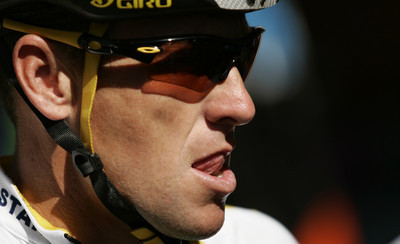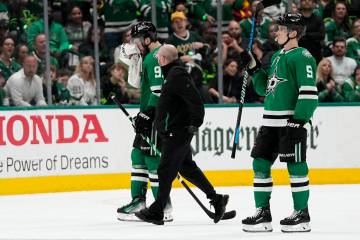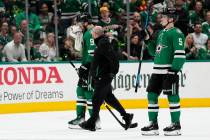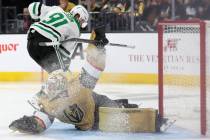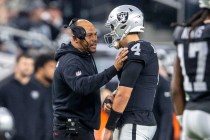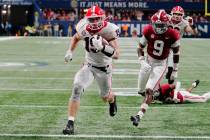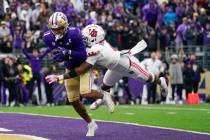Armstrong’s inspiration trumps innuendo
The message surrounding Lance Armstrong has always been more important than the suspicion. The objective has rightly always carried more weight than the gossip.
Armstrong has returned to professional cycling as a way to continue his global campaign against cancer, his influence on how others view the disease still reaching far beyond the next competition or doping rumor.
His story changed an entire generation for the better, one yellow LiveStrong wristband at a time.
But when Armstrong competes, clouds ultimately hover. His seven Tour de France titles were thought by many to be tainted amid a storm of doping accusations.
Victories of the human spirit such as Armstrong's are pretty weighty things to conquer purely with innuendo, but his immense success in one of history's dirtiest sports after beating cancer that began in his testicles and spread to his lungs and brain opened debate for how he dominated in a time of human growth hormone and designer steroids.
It's a charge we never wanted to believe for concern it might detract from a journey that offered so much hope for anyone fighting cancer. If there is one athlete's reputation Americans would likely fight most against sullying, it's that of Armstrong.
To that end, he is hoping the comeback can be more about cancer than skeptics.
Here's one way that might help: Armstrong has agreed to an anti-doping program that will have him tested every three days or so. It's a commitment that will allow doctors to freeze blood and urine samples up to eight years, so that they could be used for any new tests that are launched during that span. It's an incredibly extensive program.
"My goal in agreeing to participate is to reduce speculation and debate about drug-testing issues that might divert attention away from what my cycling comeback is all about -- our global cancer campaign," Armstrong told reporters before the start of the Tour Down Under in Australia. "I am riding in 2009 to help end the stigma of cancer, build a grassroots movement about worldwide cancer collaboration, and make cancer a worldwide priority."
There will never be a time when someone doesn't believe Armstrong wasn't fueled up those perilous mountain stages in France without the aid of an endurance booster like EPO or other banned substances, that the athlete who was tested as often or more than any of his rank didn't cheat.
I'm not 100 percent he wasn't.
How can anyone really be?
For some time it hasn't been smart to accept the word of any athlete claiming innocence with regard to doping without some level of doubt. Armstrong has been linked to more than a few suspect characters investigated on drug charges. Some have testified under oath to hearing him admit EPO and HGH use.
The only thing still missing is what has never been discovered: proof.
But no matter which side of the fence you're on when it comes to Armstrong and doping, no one can debate this fact: Since the last time he raced professionally, 27.5 million people have died of cancer. That's in 1,274 days.
His is the face millions have come to identify with survival, and that is far more an important reality than whether Armstrong was clean while showing himself to be the world's best rider.
He taught people to confront the disease and manage the fears that accompany it, along the way helping to raise hundreds of millions of dollars to fight it.
Medical technology has improved greatly over time. So too has early detection and treatment. But nothing inspires those dealing with cancer than living, breathing proof that theirs doesn't have to be a death warrant.
More than anything, that's what this comeback should represent each time Armstrong pedals in a pack. It began Tuesday when he finished 120th out of 133 riders in Adelaide, Australia, where the Tour Down Under concluded the first of six days.
Armstrong is 37 and no matter the physical marvel he was when beating cancer and winning seven times in France. Long days riding in Australia's 103-degree heat are going to affect him.
But it is his stated hope that the comeback is measured in number of lives saved than races won.
Maybe that's one reason he will test clean again each time a sample is taken. Maybe if he did dope before, his ambition to stand alone atop a podium has been completely replaced with one to present others hope.
Either way, this hasn't changed: The message is more important than the suspicion.
The inspiration will always outweigh the innuendo.
Las Vegas Review-Journal sports columnist Ed Graney can be reached at 702-383-4618 or egraney@reviewjournal.com.
ARMSTRONG BATTLES HEAT, WIND IN COMEBACK
ADELAIDE, Australia -- Riding in 103-degree heat and in wind that felt like a blast furnace, Lance Armstrong returned to professional cycling and was a long way from his seven champagne-sipping victories in the Tour de France.
Armstrong, 37, finished 120th of 133 riders Tuesday in the six-day Tour Down Under, his first road stage in three years.
Armstrong said he felt "pretty good, pretty strong" for his first day back, though he thought officials were kidding when they told him the opening day of the race was also the easiest.
Germany's Andre Greipel, the winner of last year's race, will carry an 11-second lead into today's 90-mile second stage.
THE ASSOCIATED PRESS



